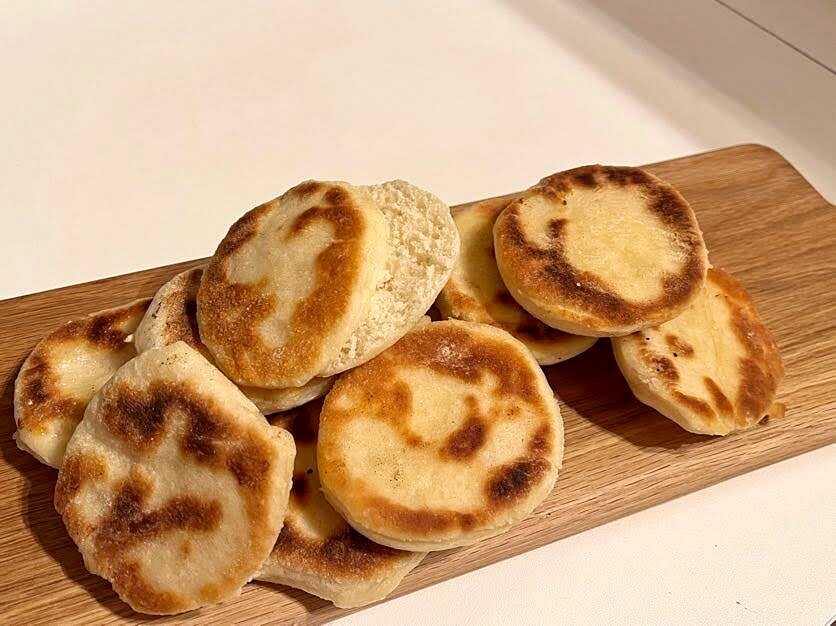
tigelle
Tigelle, also called crescentine, are small, thin round flatbreads from the Emilia Romagna region of Italy, often eaten with salty cured meats that this area is also famous for.
Tigelle bread was originally eaten by people living in the Modenese mountains, but now is commonly found in places like Bologna and Modena as a typical street food.
Traditionally they were cooked by being pressed between two clay tiles and then placed by the fire. Later, a special pan was developed, called a tigelliera. It works by heating up a hinged press over hot coals or on the stove top and pressing the dough circles into molds in between the hot plates, which usually have special designs imprinted on them. They cook only a few minutes in the tigelle press resulting in a crispy outside with a tender, chewy inside. Now for home cooks, a large sauté pan works just fine.
A common filling is pesto Modenese, or cunza, which is a mix of lard, garlic and rosemary. If that seems too decadent, a drizzle of olive oil will suffice.
Tigelle bread can also be enjoyed with cured meats, cheeses, pickled vegetables, fruits, jams and preserves or honey. They are great for entertaining, at a cocktail party or part of an antipasto platter.
Ingredients
- Flour – mix of type 00 and 0
- Water
- Milk
- Shortening
- Yeast
- Salt

Paneangeli Mastro Fornaio Lievito di Birra – popular Italian instant yeast, used for bread and pizza.
Strutto is Italian for shortening. The packaging even has a picture of tigelle on the front!
This crescentina bread recipe is very simple and traditionally was made with only flour, yeast, milk and water. Shortening or lard is also often added, but sometimes extra virgin olive oil is used instead. I love that they are cooked on the stovetop and don’t require me to heat up the oven, especially a bonus in the summer.
They reheat very well and can be put in the toaster or warmed in the oven or microwave, making it an easy snack or quick lunch, a bit like an English muffin. I made a batch and used them for sandwiches the whole week.
Step by Step
First, measure the flours into a large bowl. Stir in the yeast. An instant dry yeast doesn’t need to be activated in water first and can be added straight into the dry ingredients.
Mix the water and milk together in a measuring cup. Make sure they are at least room temperature. Alternately, you can gently warm them in the microwave or in a small saucepan on the stovetop. But make sure they don’t get too hot or else they will kill the yeast. Test it with your finger; it should feel warm, not hot. This goes for the shortening as well. It should be soft to the touch and easily pliable.
Add the milk, water, and shortening to the dry ingredients. Start to mix that all together with a wooden spoon or your hands until it starts to come together in a shaggy ball.
Turn the dough out on a lightly floured surface and continue to knead it by hand for about 10 minutes until it is smooth and elastic.
This entire dough making process can be done in an electric mixer with a dough hook. It will probably only take about 5 minutes of kneading for the dough to reach the desired consistency.
Lightly oil a large bowl and add the ball of dough. Roll it around once so that it is completely covered with a shine of oil and then cover with plastic wrap. Leave out at room temperature to rise. It should take about 2 hours to double in size.
Turn the dough out onto your work surface. The dough shouldn’t be too sticky, but you can add a light dusting of flour if necessary. Using a rolling pin, roll out the dough disc to a ½ cm thickness. It might seem thin, but the discs will rise again and puff up when cooked.

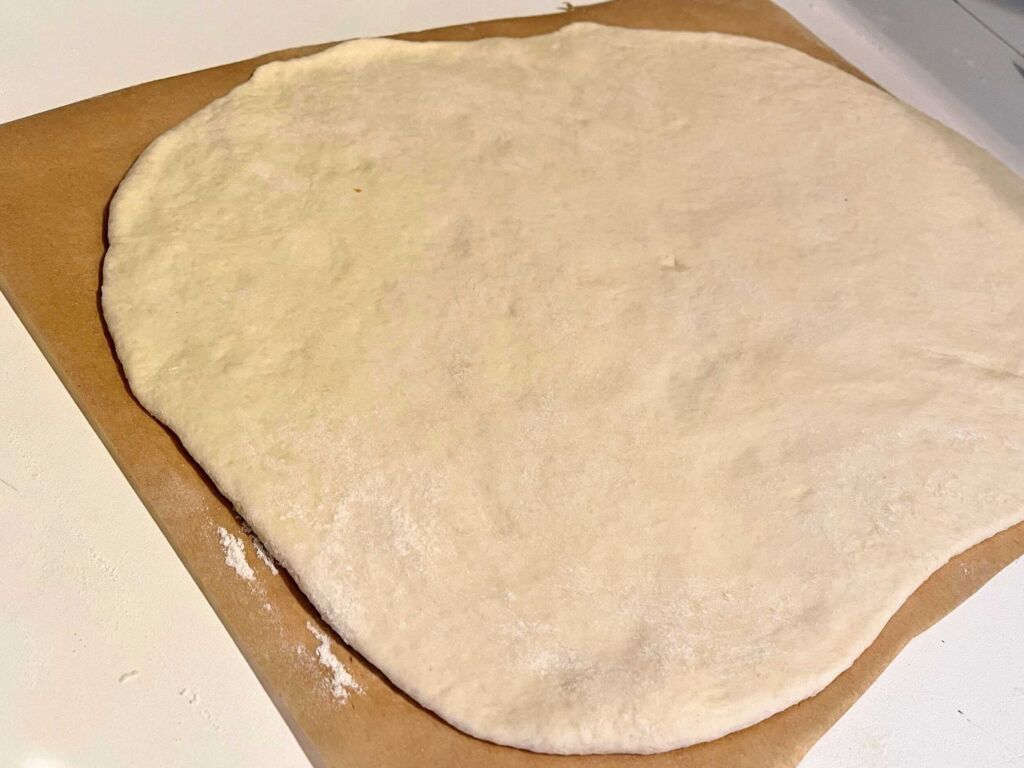
Cut circles about 6-8cm wide either with a cookie or biscuit cutter, or simply with a glass, cutting around it with a sharp paring knife. Ball up the scraps and reroll them and cut more tigelle circles.

Cover the discs on the counter or transfer them to lightly floured baking sheets and cover with plastic wrap. This is just a matter of how much space you have in your kitchen. Sometimes I find it easier to cut the circles of dough and transfer them to a baking sheet as I go to save space on my counter.
Let them rest for another 30 minutes. They will puff slightly but won’t grow too much in size.
Heat a large nonstick skillet over medium-high heat. You shouldn’t need to add oil if the pan is nonstick, but if you like, just a thin coating on the bottom of the pan gives the tigelle a nice golden color. But it’s certainly not necessary.
Add 5 or 6 to the pan, as many as will fit, and cook a 3-4 minutes per side, until they are golden brown and slightly charred in spots.
Remove from the pan and serve right away or at room temperature.

How to Serve Tigelle
Here are some Italian meat and cheese suggestions that you might find if eating tigelle in Modena or Bologna!
Prosciutto di Parma

This “King of Hams” is dry-cured ham hailing from the town of Parma, located in the heart of the Emilia Romagna region. It is a variety of prosciutto crudo, meaning raw, as opposed to prosciutto cotto, meaning cooked, which is similar to American ham deli meat. It is made following time-honored methods and legal guidelines from specially selected heritage breed pigs raised in only 11 approved regions of Italy. The legs are salt-cured and left to hang from wooden frames in ventilated rooms that let in the natural breezes from the surrounding fresh mountain air. The pieces are expertly inspected and branded with a seal of authenticity, the “Ducal Crown”. With a delicate, almost sweet taste, it pairs well with other saltier cured meats and cheeses as well as creamy mozzarella and fruit.
Mortadella Bologna
This “Pink Queen” has history dating back to Roman times. Mortadella differs from other similar salami because it is cooked. Lean parts of pork, mostly shoulder, are ground and dotted with choice pieces of pork lard. The mix is stuffed into casings, tied with rope, hung, and cooked using special dry air stoves. This process cooks them slowly and gently to achieve a soft, delicate flavor and aroma to the final product. They are often also studded with pistachios. Mortadella is commonly eaten like other cold cuts, sliced very thin and put on some crusty Italian bread.
Parmigiano Reggiano

The “King of Cheeses” is made from unpasteurized cow’s milk that has been aged for at least 12 months. Parmigiano Reggiano is produced in the Emilia-Romagna region of Italy and has a savory, nutty flavor and a crystalline texture making it easy to slice into shards. When selecting wedges, look for the official stamp on the rind. This indicates that they were produced following strict standards set by the consortium of producers in Italy.
Provolone Valpadana
Provolone Valpadana is a semi-hard spun cheese made with cow’s milk. Provolone Valpadana is a DOP product, Denominazione d’Origine Protetta (Protected Designation of Origin) meaning the entire production process is guaranteed to be traced to specific regions in Northern Italy, including the province of Piacenza in Emilia Romagna. It is generally formed into four shapes: salami, pear, conical, and flask. It is also produced in sweet, spicy, and smoked varieties, making it a great pairing with cured meats on an antipasto board. It also is a great melting cheese and can be used in many savory recipes.
Sweet tigelle
Also try filling your tigelle with nutella and/or your favorite berry jam for a fun dessert or snack!
Tips and FAQs
- Flour: all 500g of type 00 flour can be used, or a mix of 300g 00 flour and 200g bread flour
- Extra virgin olive oil can be substituted in an equal amount for the shortening
Tigelle Bread Recipe
Tigelle Bread
Course: Antipasti, Bread18-20
pieces20
minutes20
minutes2
hours30
minutesIngredients
300g 00 flour
200g 0 flour- *see note
150 ml warm water
150 ml milk, room temperature
30g shortening, room temperature
5g dry brewers yeast – *see note
8g salt
Directions
- Measure flours into a large bowl. Add the yeast.
- In a small bowl or measure cup, mix water and milk. Gently heat in the microwave or on the stovetop to reach lukewarm temperature, if necessary.
- Add the liquid to the dry ingredients along with the shortening and combine with a spoon or your hands until fully incorporated. Add the salt. Turn the dough out onto a lightly floured work surface and knead for about 10 minutes or until smooth. Dough can also be made in an electric mixer.
- Transfer dough to a lightly oiled bowl and cover with plastic wrap. Let rest at room temperature for 2 hours or until doubled.
- Turn the dough out onto a work surface lightly dusted with flour. With a rolling pin, roll to a thickness of ½ cm. Cut circles 6-8cm wide with a cookie or biscuit cutter or cut with a sharp paring knife around a glass. Roll up the dough scraps, reroll and continue to cut circles. Cover the discs on the counter, or transfer to floured baking sheets and cover with plastic wrap. Let rest for another 30 minutes.
- Heat a large nonstick skillet over medium-high heat. Add 5 or 6 tigelle to the pan, as many as will fit in your pan, and cook 3-4 minutes per side, until golden brown and slightly charred in spots.
- Serve warm or room temperature with your favorite Italian meats and cheeses!
Notes
- *All 500g 00 flour can be used or a mix of 300g 00 flour and 200g bread flour.
- *In Italy, I use Paneangeli Mastro Fornaio Lievito di Birra. Feel free to use whatever brand of instant yeast you prefer.
More Recipes



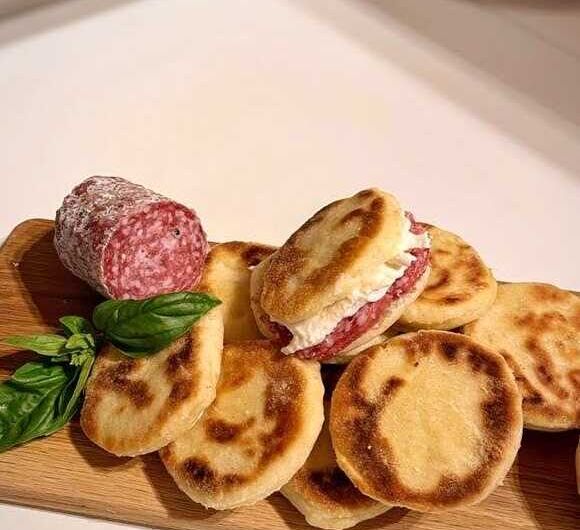


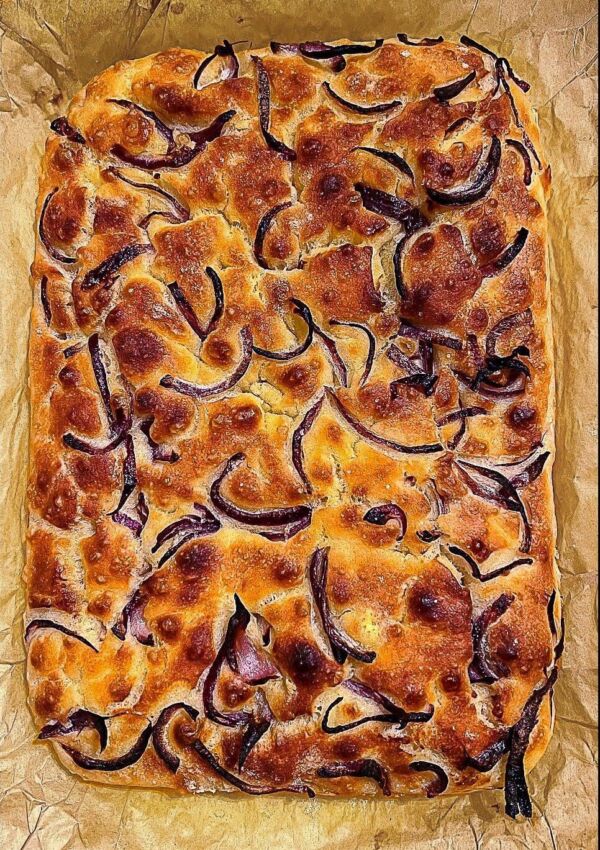

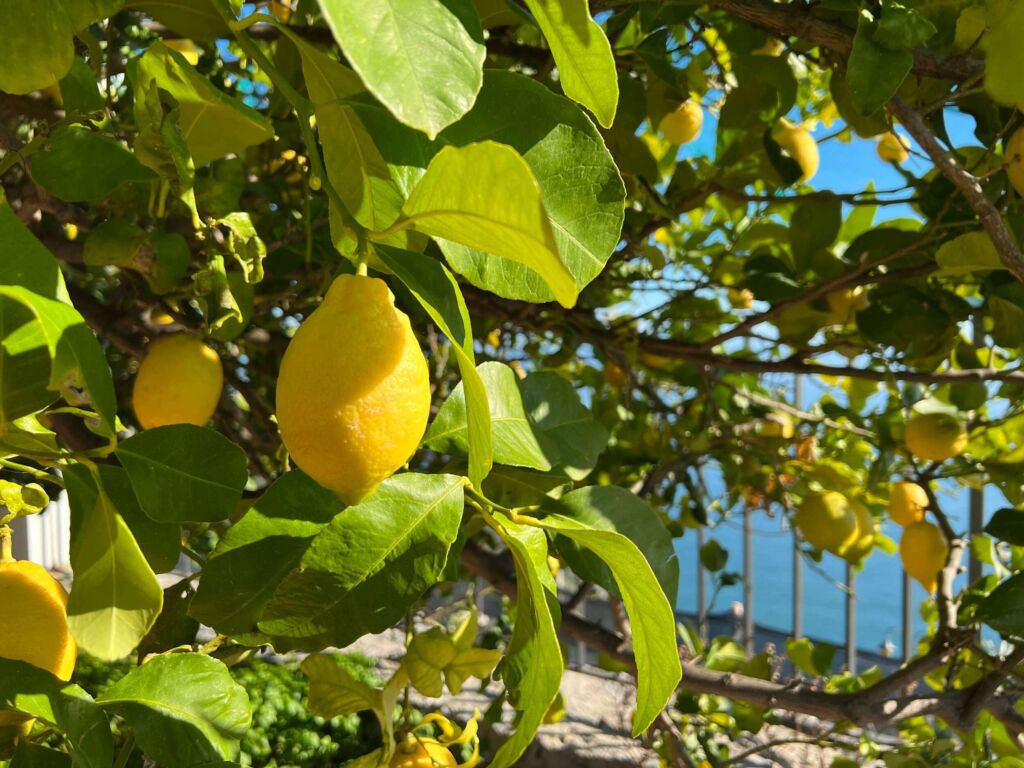
Leave a Reply
You must be logged in to post a comment.